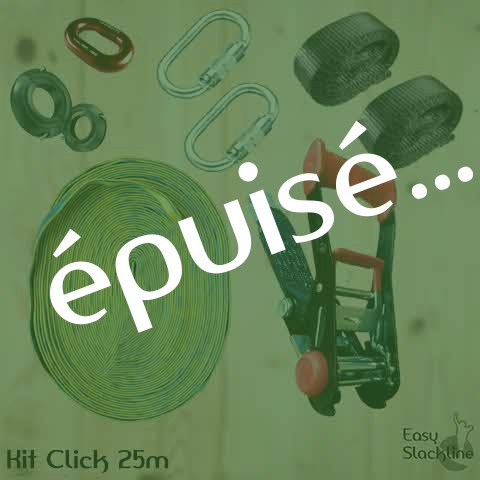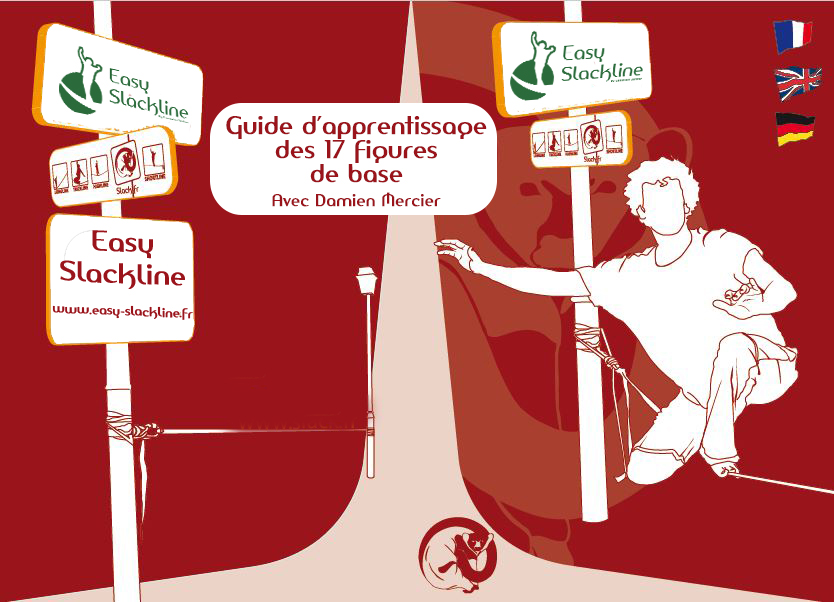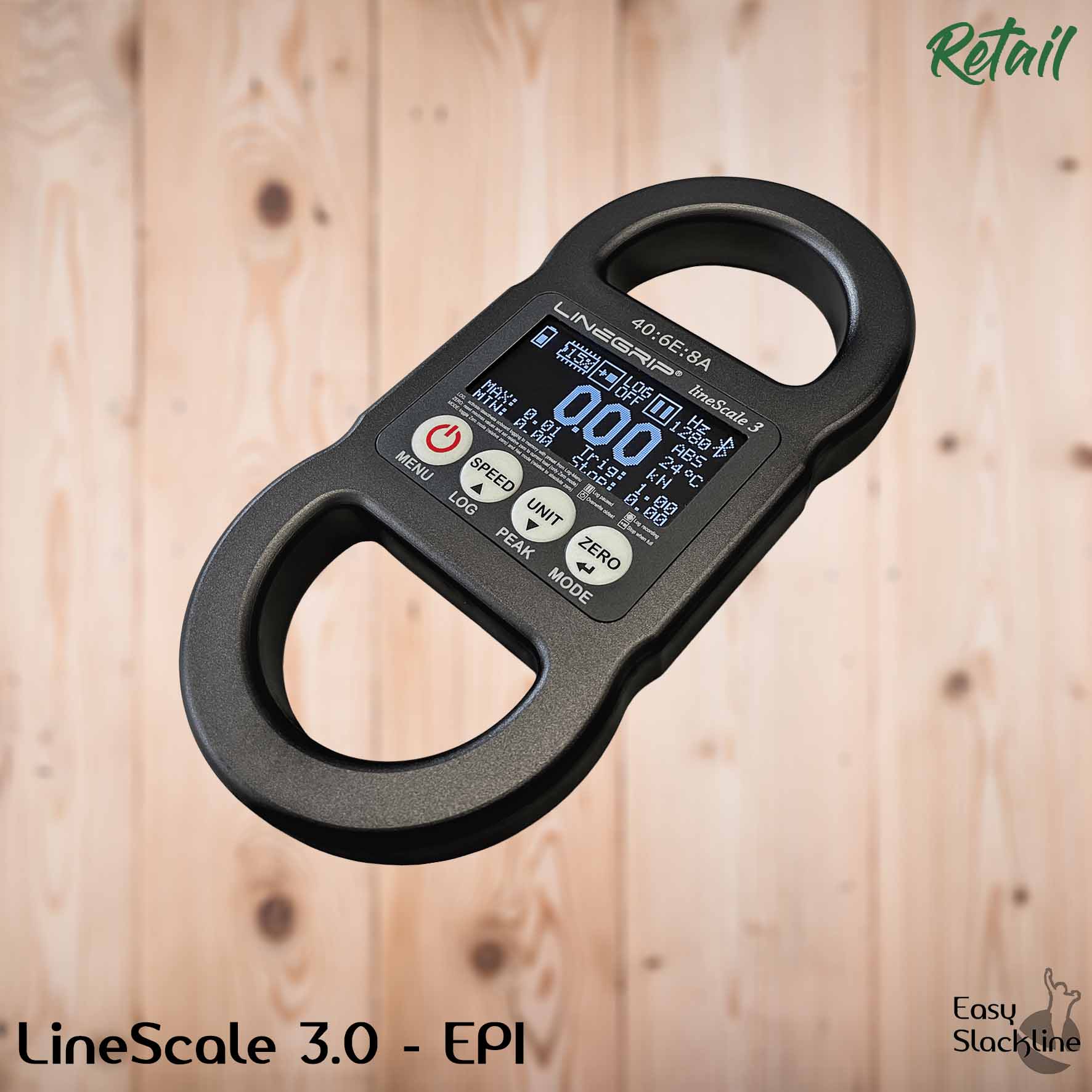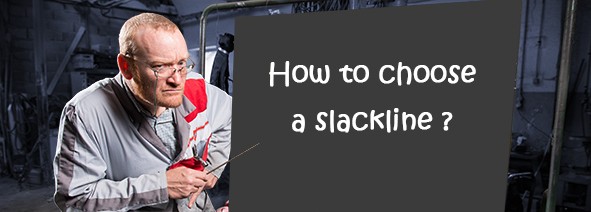From Monday to Friday 09:00am - 18:00pm
15m are already in the pocket ! Not bad !
Now it's time to go on 25m long with the Click Kit 25 !
If the relative weight is not a burden for you, if your main requirement is simplicity of the set up, just go for this kit !
Thanks to the use of a slackline ratchet, the set up is quick and easy. Additional spacers are very useful to guide the 2,5cm line into the ratchet.
The 25m Click Kit uses a sling and a carabiner to be sure that the line will not be twisted! See the user guide in the "Documentation" section.
What slackline webbing should i choose ?
There are different types of slackline webbing:
Tubular slackline webbing is playful (swell, wide, soft bounces), providing elasticity even over short distances. Lightweight and compact.
- The RVD (blue and yellow)
Flat slackline webbing, less elastic and easier to tension. It's also very comfortable barefoot because of its round edges.
- The Shaq (purple and yellow)
To answer the question "Which is better or easier?", there is no such thing.
It's just two different sensations, to be appreciated individually.
The differences in sensation will really start from about 15/20m long. For more details, we invite you to read our article on how to Choose a slackline.
Using advices :
- If you practice over a length of 15m, install the webbing (slightly) above your pelvis.
If you want to know more slackline tension click here - Pull alone to tight it. Only person allowed.
- This kit can be used over a maximum of a 25m length but can evolve up to 35m.
- The Kit can stay in place for a day or two, but it's better to derig it after use.
- Thanks to the Lasso (soft release system), your ratchet won't be damage when uninstalling - check options
- Always store your kit, dry and clean, protected from the moisture (like all textiles). Click here for more details about how to store and maintain slackline equipment.
Incompatibilities :
- Do not set on street furniture (posts, lampposts, etc.), nor on the pole of your terrace or balcony! They are not at all designed to withstand horizontal forces!
Let's see here what could happen : click here - No Jumpline/Trickline. You want to practice Freestyle ? Look out for Freestyle equipment like the Trickline kit.
Weight and volume :
- 2,73 Kg
- 8 L
Tree Protections : +0,3 Kg
Tips :
- Pinch the webbing in the loop to adjust it perfectly flat. See video set up.
- Put the ratchet's handle face down
- You don't want to use the girth hitch knot ? You can then simply upgrade your kit with :
- 1x basic sling
- 1x steel carabiner
Want to go further ? Upgrade your kit :
Now, you've managed the 25m? Keep your kit and add the following items to go to 35m long !
- 1x Deluxe ratchet with a 20cm sling
- 1x 35m of slackline webbing without eyeloop
- 1x basic sling
- 1x steel carabiner
Slackline kit content :
- 1x Ratchet, Minimum Breaking Strength 50 kN, with a 2,5m long and 5cm wide sling with eyeloop.
- 1x Spacers, to center the webbing into the ratchet's cylinder. (4 half moon pieces, 4 screws, to fix with a cross-headed screwdriver, not included)
- 1x Sling 220cm with loop, resistance 30,8 kN
- 1x Steel carabiner, resistance 24kN
- 1x 25m slackline webbing with eyeloop. Check the Breaking Strength of your webbing here
- 1x User Guide
Options - Feel free to choose between :
- The Lasso / soft release system = to uninstall easyly and softly
-
- The Lasso or soft release system is directly connected to the ratchet. It allows you to release the slackline WITHOUT KNOCKING the ratchet. Just remove the scratch and let the webbing of the Lasso slide gently to release magic!
- Top for the comfort, top for the life of the ratchet!
- Composed of :
- 1x Lasso
- 1x 14mm shackle CaptivPin
N.B : The shackle will replace the carabiner originally supplied
- Tree protections = Treeco 150cm or 200cm
-
- Tree Protections protect both trees and equipments.
- They are also very useful for the setup (see video)
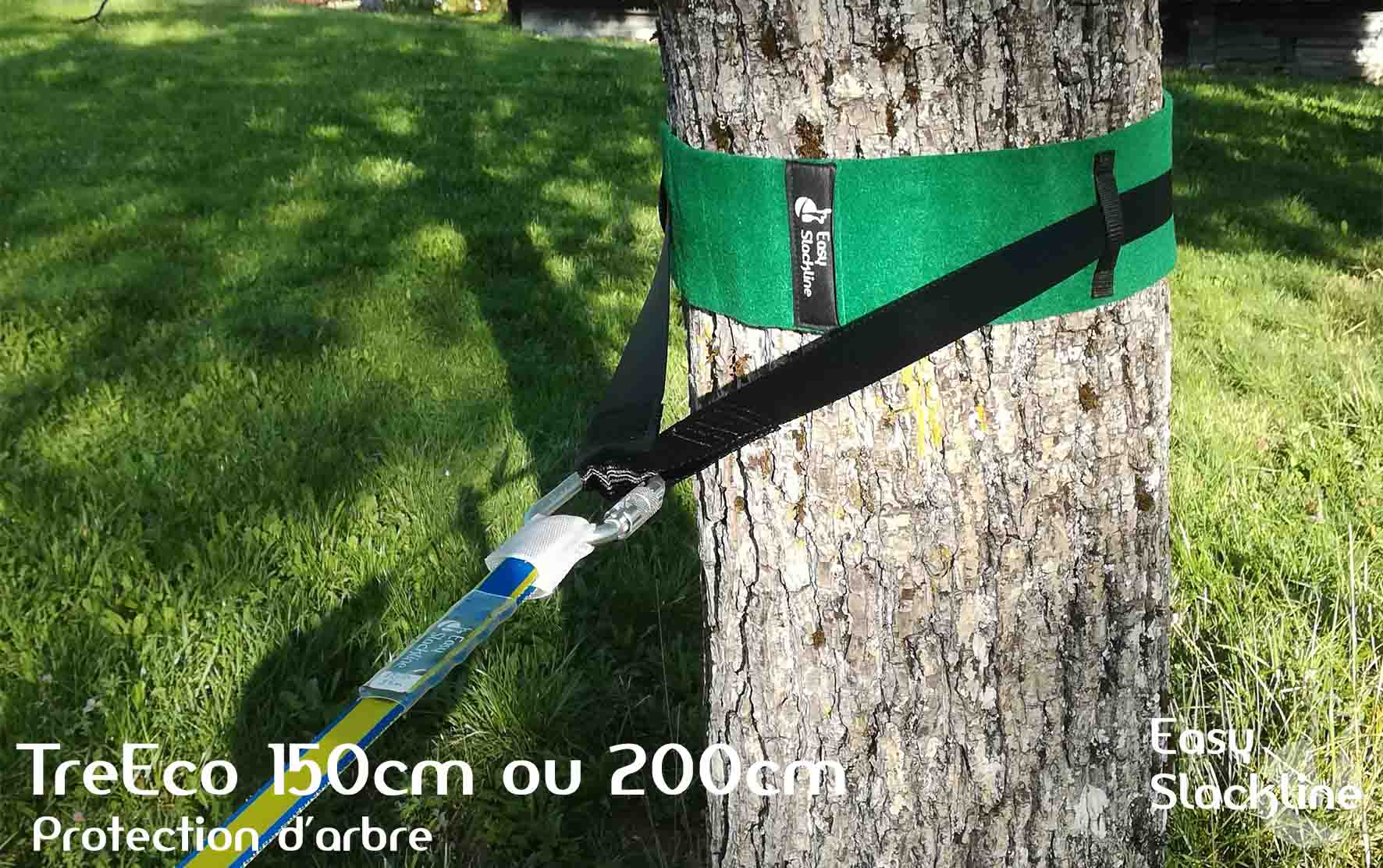
-
Carry bag
-
Canvas bag 14L
Nice to store your slackline between two sessions. No backstrap - Drybag 20L
Our Drybag is water and dust resistant! Ideal for storing your equipment in a safe place.
Plus, with its shoulder straps, it's super convenient to carry!
-
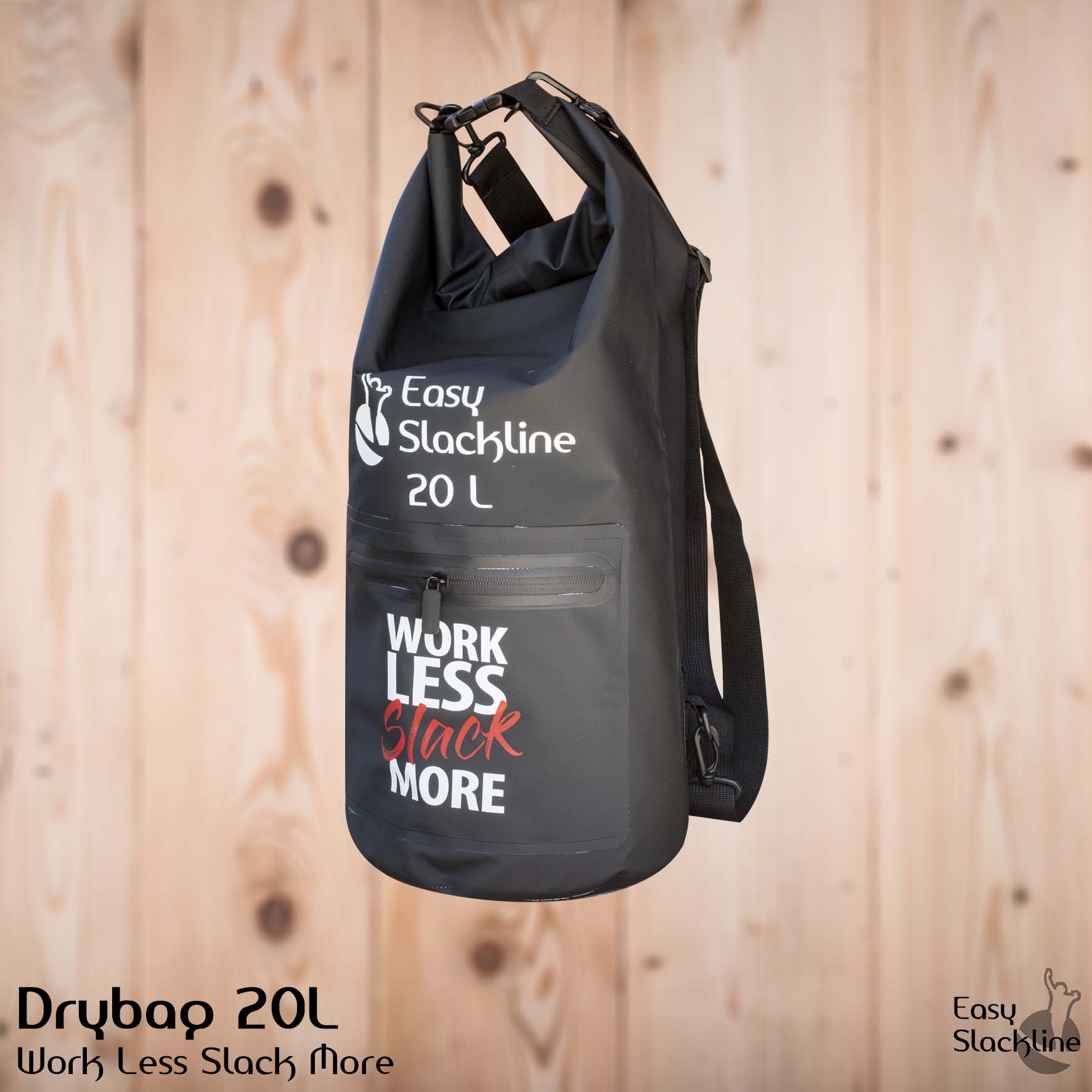
-
Custom webbing
- Don't forget to add your text in the comment section when ordering. (at the validation step 03.Adress)
- Font : Amerika Sans (see picture)
- 18 font characters - spaces included
- Font color : black
- Printed on the tail of the webbing, side of the loop by default
- Choosing a printed webbing add 2/3 days to your order's delivery
- For more details on how works this option : slackline customization
.jpg)
Responsibility
Slacklining and more particularly Highline (in the void, secured by a harness) are sports practices that have no normative or regulatory framework for the manufacture of the material as well as for its installation.
This is why we do not guarantee our own equipment for highline use.
Our products are tested within our company and independent laboratories (mentioned on the product page) via a process that evolves with practice.
These resistance tests have no legal value, they aim to ensure the safety, resistance and comfort of use of our equipment - in the context of our practice.
It is the responsibility of the practitioner to choose the equipment with the appropriate resistance and to have the necessary experience to adapt the installation to his practice.
And to use appropriate equipment to secure oneself if necessary, such as PPE equipment (climbing gear, ropes, etc.).
Generalities
- Do not install your slackline across a path, trail or place of passage
- Do not install your slackline more than 2m from the ground without securing yourself with PPE equipment
- Practice on grassy or cushioned ground free of any protruding objects or objects that could cause injury
- Do a back up = secure your tension system
- Never use a ratchet for highline practice
- Never install your slackline on urban furniture (benches, lampposts, barriers, etc.)
Safety regarding highlining
It is the responsibility of the practitioner to use appropriate equipment to secure oneself if necessary, such as PPE (climbing equipment, ropes, etc.).
In NO CASE is this equipment designed to secure itself. For the lifeline - called backup - we advise to use only PPE standard material (climbing material, ropes, etc).
Unless expressly mentioned, no slackline element can be considered as PPE (personal protective equipment) for sports and leisure activities
NEVER USE SLACKLINE MATERIAL TO SECURE YOURSELF / TIE YOURSELF DOWN. IT IS NOT CLIMBING EQUIPMENT, NOR IS IT EPI STANDARD EQUIPMENT.
You can find more information on our website highline.fr
Download all our PDF installation manual (choose yours in the list) by clicking just below :
----------
Video Set Up
----------------
Your firsts steps with Romain Billard :
Tuto Slackline : Les premiers pas
par Cabinet-de-Curiosites
----------------
How to slackline, including 17 easy tricks :
click here to download)
----------------
Slackline Safety - back up guide - protect your set up and yourself.
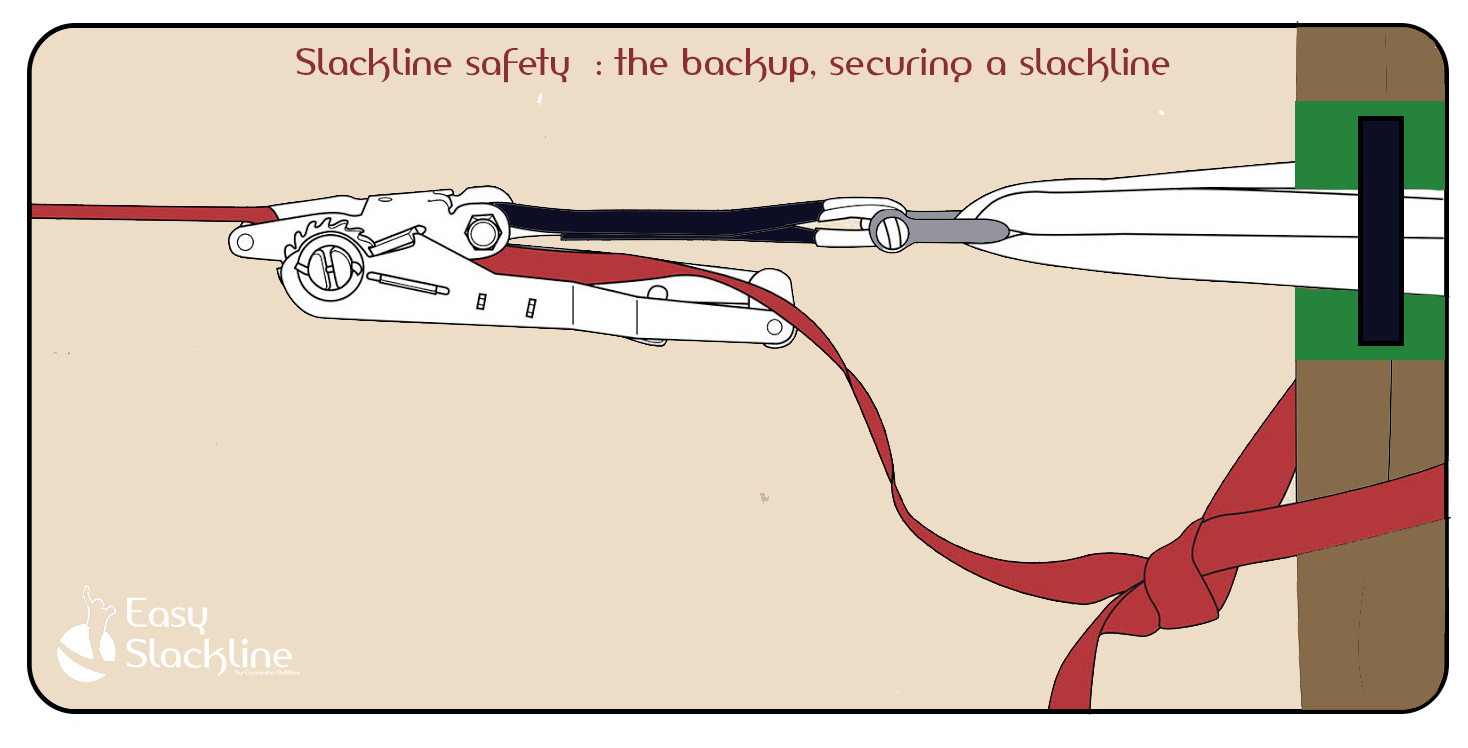
-----------------
How to determine the tension in your slackline ?
- Our spreadsheet :
Thanks to the following sheet, you will be able to approximately know the tension into your gear (slings, shackle, slackline, etc.). You will then know if you are using it correctly, meaning correctly regarding the using advices and most important the strength limits.
Click there to see the sheet and enter your datas : calculate slackline tension
- The Linescale dynamometer
This product allows you to mesure exactly what is the tension into your equipment.

